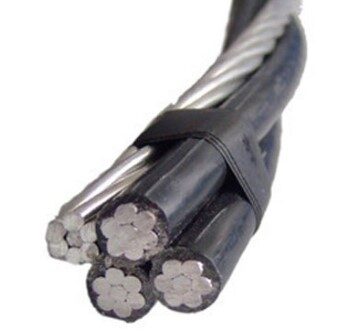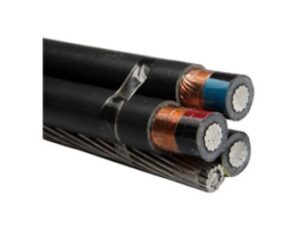XLPE is another widely used insulation material, suitable for applications ranging from low-voltage to high-voltage cables, owing to its superior properties compared to traditional materials like PVC. It offers excellent tensile strength, impact resistance, and insulation, and it does not melt at elevated temperatures. In addition, XLPE insulation provides high resistance to water treeing, making it particularly suitable for both LT and HT cables.


Low Tension (LT) XLPE Cables are manufactured as per IS: 7098 / Part 1 and are suitable for continuous conductor temperatures of up to 90°C and short-circuit conditions of up to 250°C. LT XLPE cables possess excellent electrical, mechanical, and thermal properties, surpassing those of conventional polymeric dielectrics. Owing to these superior characteristics, LT XLPE cables are widely used in power stations, industrial units, infrastructure projects, and power transmission and distribution networks. They offer an economical solution for low-tension power distribution with high efficiency and complete reliability.

High Tension (HT) XLPE Cable manufacturing demands precision and expertise at every stage. Since HT cables are subject to higher electrical stress, it is essential to extrude insulation that is flawless—free from contamination, voids, and defects. To achieve this, the Continuous Centenary Vulcanizing (CCV) process line (dry curing) is employed, ensuring consistent quality. Only the best raw materials and high-grade CCV lines are used in production.
The cable core is triple-extruded and cross-linked in a fully enclosed process, where the inner semi-conducting screen, XLPE insulation, and outer semi-conducting screen are applied simultaneously to the pre-heated conductor. Advanced in-line inspection techniques, such as X-ray monitoring, are utilized to ensure dimensional accuracy of the extruded core. Finally, the HT cables undergo rigorous testing, including high-voltage withstand tests and partial discharge tests, to guarantee performance and reliability.
Longer service life compared to conventional PVC cables
Higher conductor temperature rating: 90°C vs 70°C for PVC cables
Higher emergency overload capacity: 130°C
Maximum short-circuit temperature: 250°C vs 160°C for PVC cables, giving them a higher short-circuit rating
Excellent insulation resistance, superior to PVC cables
High corrosion resistance, even in polluted environments
Strong resistance to chemicals and corrosive gases
Lower installation cost due to lightweight design and greater flexibility
Better ability to withstand vibrations and hot impacts
Easier and quicker jointing compared to PVC cables
WhatsApp us